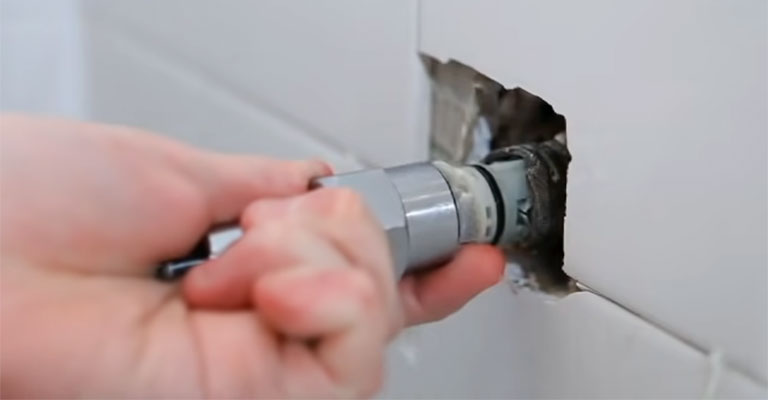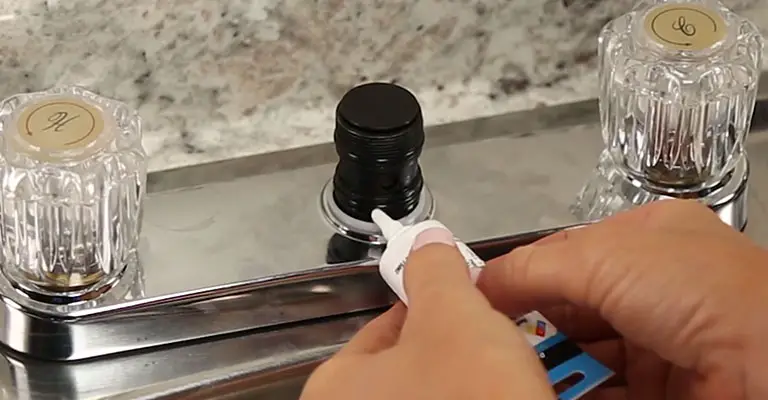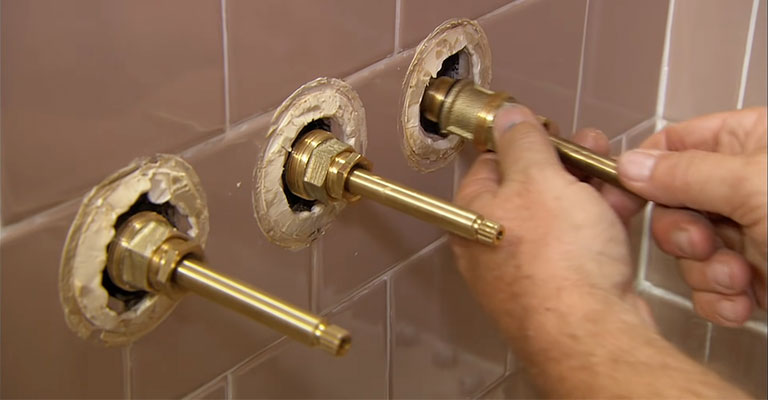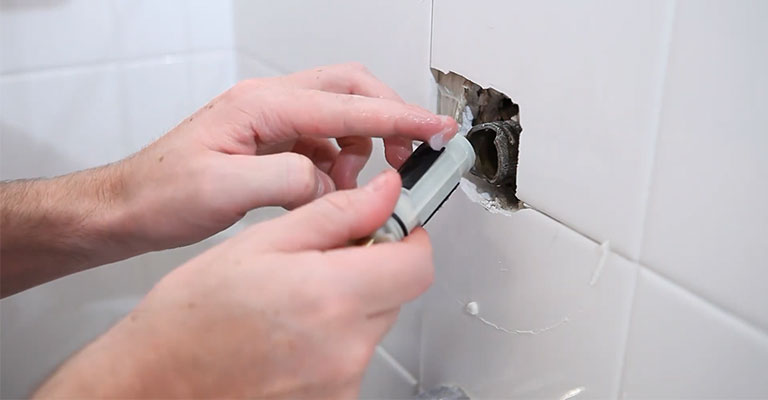You hear a squeak in the shower. Your first thought is a mouse is running rampant ready to take over while you’re trying to get your scrub on. However, it may not be a mouse.
It’s most likely your shower faucet squeaking and not a fuzzy pest. However, your shower faucet can squeal worse than you might imagine if dust and dirt have built up in the cartridge behind the handle.
If your faucet is older, this is probably the culprit causing the horrendous squeaking. Faucets need cleaning once in a while to get rid of buildup and applying a little plumber’s grease is recommended.
In fact, manufacturers recommend you apply a plumber’s grease to a shower faucet to clear out debris and prevent rust.
This will make the shower handle easy to turn and stop any squeaking. It is not very difficult to do if you have a few simple tools plus a container of plumber’s grease.
Whether the faucet is a washer-type, washerless, diaphragm-type, disc-type, ball-type, or cartridge faucet, grease is applied to the valve stem and seat to implement smooth movement. Some faucets have a specific hole for the application of grease.

What Is Plumber’s Grease?
Plumber’s grease looks something like Vaseline, but those who know plumbing say it works better and lasts longer.
Plumber’s silicone grease is much more durable than Vaseline. It’s thick, food-grade, waterproof, and will last a long time.
It is a waterproof silicone-based grease made by combining silicone oil, usually polydimethylsiloxane (PDMS), with a thickener, often silicone grease. It is essentially dielectric grease, but it is much thicker and lasts a long time.
What Is Plumber’s Grease Used For?
Plumbing parts are lubricated and protected with the plumber’s grease. An electrician commonly uses it to install O-rings or faucets. Due to its frequent use in fixing faucets, it is also known as faucet grease.
All kinds of faucets are usually greased with plumber’s grease. Take apart the faucet after a good cleaning and apply the plumber’s silicone grease afterward if you have a stiff or squeaking fixture.
Plumbing fixtures like toilets, showers, and faucets use plumber’s grease for sealing, securing, and maintaining O-rings, gaskets, cartridges, handles, and swivel joints.
There are a lot of pipes that could use a little lubrication because it’s safe to use with potable water.
Some faucets and shower heads recommend applying silicon grease to the moving parts before operating the fixture because it makes it easier to operate and prevents any annoying squeaking.
Make sure you lubricate your fixture according to the manufacturer’s recommendations.

How Do You Apply Plumbers Grease?
Let’s get to work. Now that we know we’ve got to use the good stuff, how do we do it? Honestly, it’s not that hard. Almost all faucets today have cartridges inside, so you’ll have to take them apart to grease them.
Make sure you do this regularly to your faucet handles and cartridges to improve performance, prevent stiffness, and prevent buildup and rust.
You can also prevent squeaking by lubricating the faucet regularly. Let me show you how:
- Let’s start by turning off that faucet’s water supply. Under the counter or nearby, there should be a switch that closes the valves.
- Ensure the handles are off when using the plumber’s grease on the sink.
- Depending on how it’s designed, it’ll look different. Unscrew the screws once you’ve found them.
- Take off the nozzle
- To apply the plumber’s grease to a shower valve cartridge area, you will have to disassemble it with screws.
- Using silicone plumber’s grease, reassemble the rubber ring after applying. This process will look different depending on what you want to apply it to.

Applying Faucet Grease
Almost every shower faucet has a cartridge, as do all Moen shower faucets. Even if the shower squeaks, the manufacturer recommends lubricating the cartridge regularly.
Occasionally cleaning out the cartridge and lubricating it with a plumber’s grease can remove rust.
In addition, a lubricant helps to eliminate squeaking from Moen faucet cartridges. This technique can also fix Moen shower faucets that are hard to turn.
To loosen the handle, you must first relax the screw holding it on. The back of the faucet is where it is located.
You can also remove the plate behind the faucet by taking out the screws holding it on. Shower cartridges are easily removed from their collars.
In the area surrounding the cartridge, you’ll find U-clips. The cartridge itself comes out when you remove these with pliers.
You can lubricate it with the plumber’s grease after wiping it with paper towels. The deed is complete once the faucet has been reassembled.

Is There A Substitute For Plumber’s Grease?
You may be searching for an alternative to silicon plumber’s grease if your faucet squeaks and you want it fixed immediately. Unfortunately, it is impossible to substitute the real thing for an imitation if you want it done correctly.
There are a few other products that might work, including olive oil and WD-40. However, it is not recommended to use these.
Their thinness makes them impossible to keep in place. In order to avoid having to reapply the silicone plumber’s grease and ensure it is working properly, make sure you use the original.
Squeaky Shower Faucet
Generally, you’ll experience difficulties turning a relatively new shower faucet and the sound of squeaking.
The cartridge can be cleaned and lubricated by removing the handle and removing the handle. Using a screwdriver, pliers, and plumber’s grease shouldn’t take more than a few minutes.
With the plumber’s grease, just grease the parts that regulate water flow in the shower assembly. Your bathroom’s shower system may require different components.
Water is started and stopped by cartridges in most modern showers, and the temperature is controlled by them as well. You must remove the faucet handle to expose the cartridge behind the handle to stop the shower from squeaking.
The Bottom Line
In summary, silicon plumber’s grease should be used if you have faucets. The terrifying squeak can be prevented even if you aren’t experiencing it right now.
In addition, lubricated faucets are longer-lasting, preventing wear and tear with a plumber’s lubricant.






